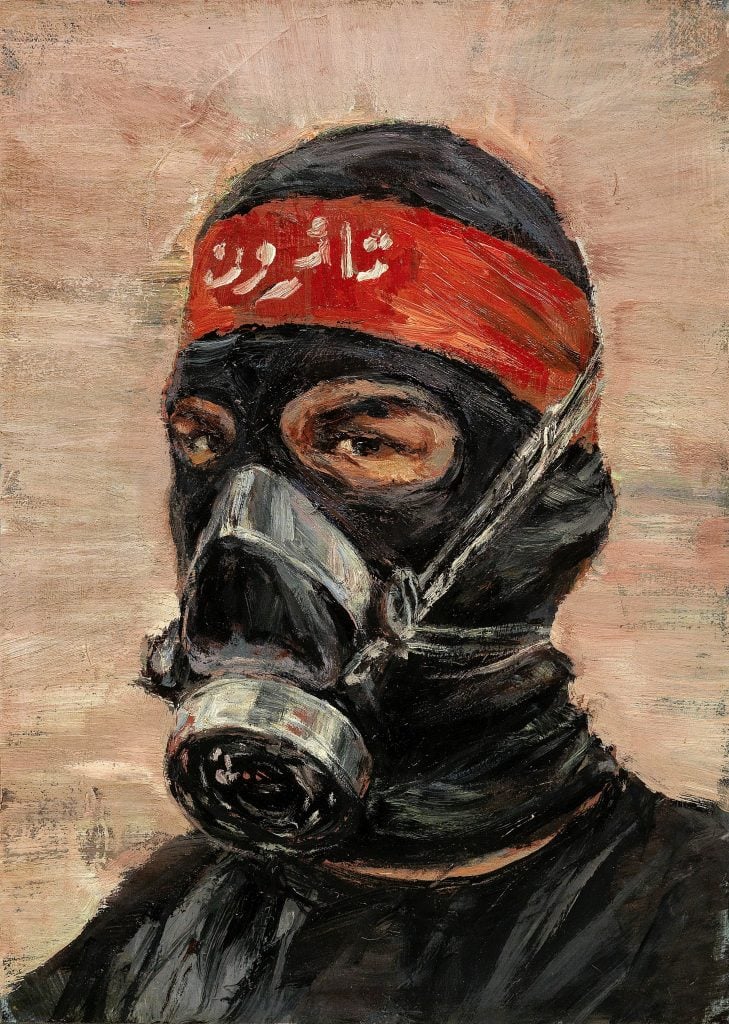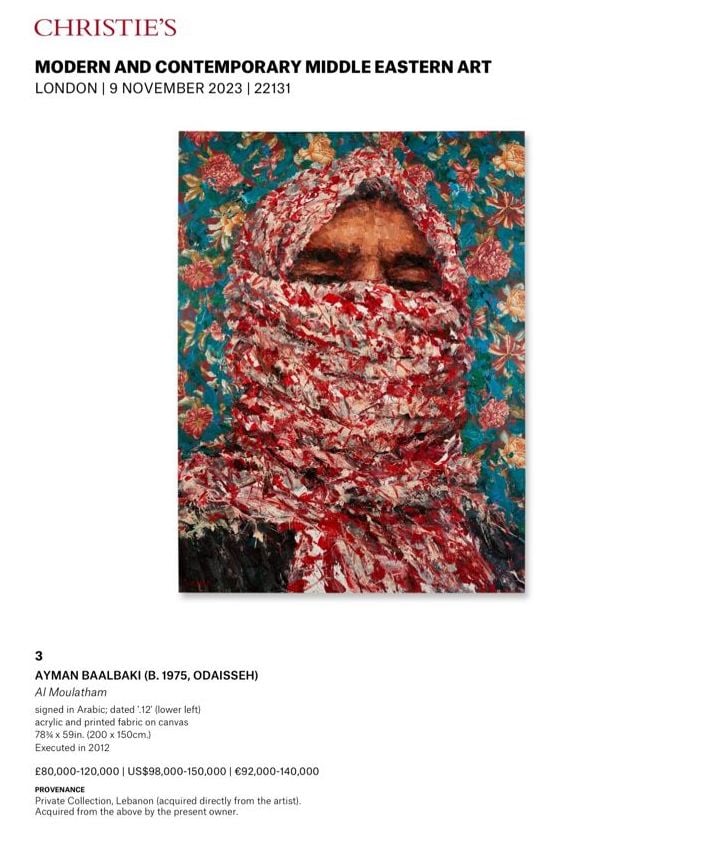Auctions
Christie’s Pulled Two Works by a Prominent Middle Eastern Artist From Sale After a Complaint
A consignor has suggested that the paintings by Lebanese artist Ayman Baalbaki could have been mistakenly associated with Islamist extremism.

A consignor has suggested that the paintings by Lebanese artist Ayman Baalbaki could have been mistakenly associated with Islamist extremism.

Rebecca Anne Proctor

Last week, Christie’s executive management in New York received several complaints regarding two paintings by renowned Lebanese artist Ayman Baalbaki that were due to be auctioned at the house’s Modern and Contemporary Middle Eastern Art sale on November 9 in London. The auction house has since removed the works from the sale.
One of the consignors, who agreed to speak on condition of anonymity, said that he told Christie’s of his disappointment and confusion as to why the auction house decided to “ban and censor” a work by one of the Middle East’s most prominent artists. He added that the auction house offered to sell the work privately for him instead.
When asked over email to explain why the auction house removed the works, a Christie’s spokesperson declined to comment, stating that decisions relating to sales “remain confidential between Christie’s and our consignors.”
The consignor believes the paintings were removed due to a misunderstanding over the works’ subject matter, relating it to “Islamist extremism” during the present Israel-Hamas war. The portraits could mistakenly appear to depict Islamic resistance fighters or terrorists to anyone unfamiliar with the history of the region.

A screengrab of Christie’s sale’s catalogue before the work was removed.
The first, formerly lot 3, is Al Moulatham, which is a 200 by 150 cm painting executed in 2012 that was catalogued with an estimate of $98,000–$150,000. It depicts the portrait of a man wrapped in a white and red checkered keffiyeh, the traditional headdress worn by men throughout the Arab world to protect against the sun, sand and dust in hot and arid climates.
The keffiyeh has been worn since before Islam across the Middle East and North Africa by Arab men and Iraqi Turkmen, Kurds and Yazidis. Over the last few decades, the checkered black or red headdress has been used also as a symbol of Palestinian resistance. Conversely, in the west it has also garnered an association with Islamist extremism and terror. Against this backdrop, the red checks of the headdress, rendered in Baalbaki’s painterly style, might cause some viewers to confuse them with blood stains.
“These are the double-standards that we are dealing with these days,” added the consignor, who is of Middle Eastern descent.
Al-moulatham, which stems from the Arabic word litham, means a mouth-veil or face covering used often by nomadic men in the Arab world and North Africa. The work is part of a series of portraits Baalbaki made depicting Fida’i meaning “freedom fighters” in Arabic.
“When I painted the first Mulatham, the Lebanese Civil War was on my mind,” Baalbaki said in a phone interview.
Born in 1975, Baalbaki, grew up during the Lebanese civil war and the Israeli occupation of southern Lebanon. From an early age he explored themes of displacement in his paintings, and is today one of the most acclaimed artists in the Arab world. The artist has said that the series is not limited to the civil war and is as much about defeat as it is about “heroism, hope and despair.”
Speaking about the series with Lebanese Iranian curator, gallerist and author Rose Issa in Beirut in September 2011, Baalbaki explained that there is confusion about the word fedae in Arabic and its root, derived from fadi (redeemer or savoir) which is from fada (to sacrifice oneself). “Al-Fadi is used to describe Jesus Christ. I like the confusion, the challenge, the provocation,” he said at the time. “Did Jasper Johns encourage imperialism by drawing the American flag? In the same way, I am not glorifying martyrdom.”
The second painting, previously lot 58, is titled Anonymous, and was executed between 2011-2018. It had held an estimate of $15,000 to $22,000.
The work portrays a man wearing a gas mask over a black balaclava, with a red bandana around his head that reads “we revolt” in Arabic. According to Baalbaki, the work was painted around the time of the Egyptian revolution during the Arab Spring in 2011.
Both works and others in the series have been circulating on the secondary market for several years. They have previously been sold by Bonhams and Sotheby’s as well as by Christie’s. Anonymous was last sold publicly by Bonhams in June 2020 for £21,312.50 ($26,919 at the time) including premium.